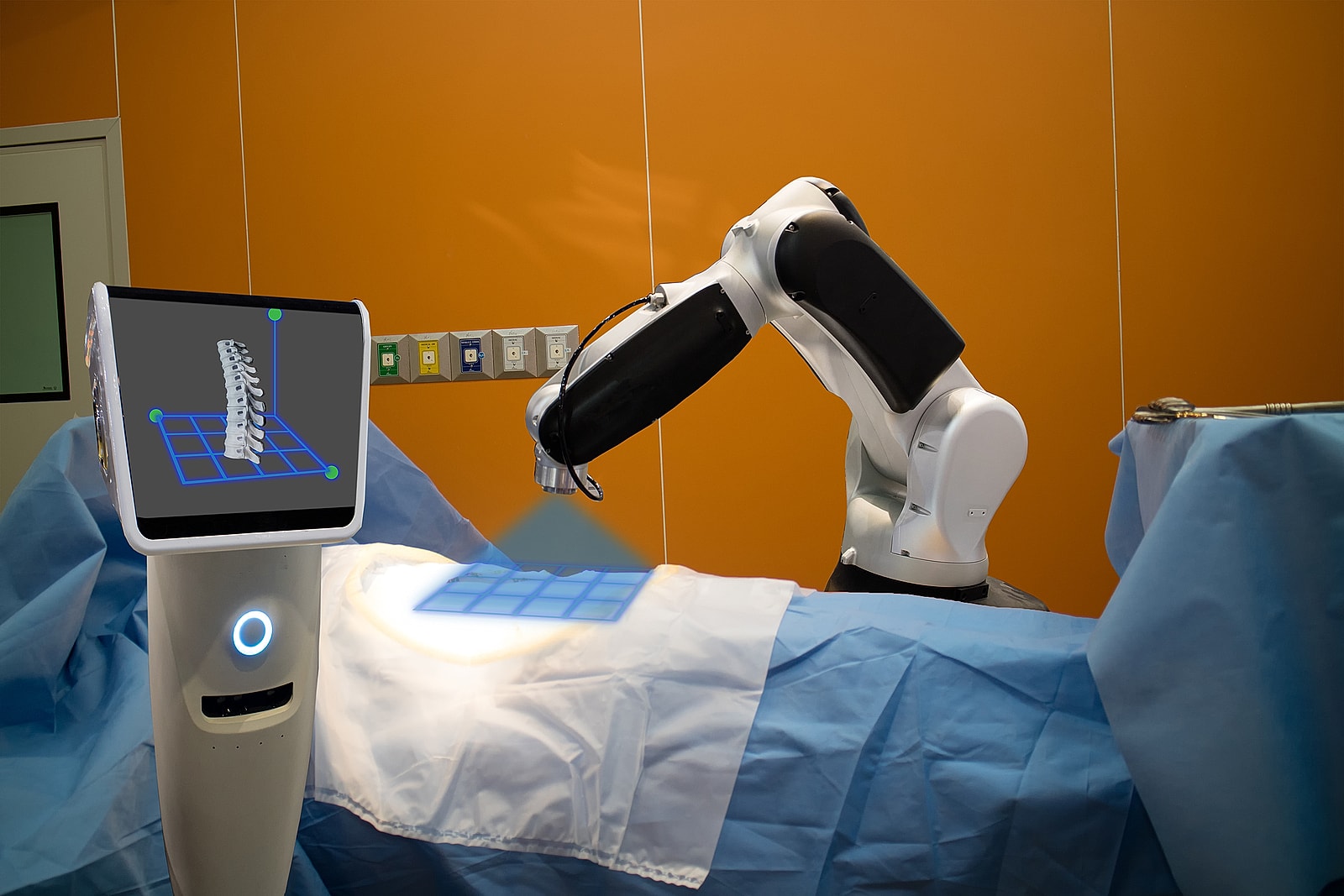
When most people think of spine surgery, they picture long recovery times, large incisions, and a lot of uncertainty. But modern technology is rewriting that narrative, especially with the rise of robotic spine surgery and augmented reality (AR) tools in the operating room.
At NYNJ Spine, we believe in leading with innovation. These advancements aren't just about cutting-edge tools; they're about improving patient outcomes, shortening recovery times, and ensuring you feel confident in your care every step of the way.
Robotic spine surgery uses specialized tools guided by a surgeon and supported by a robotic navigation system. This allows for incredible precision, especially in complex procedures such as spinal fusions or disc replacements.
Unlike traditional surgery, robotic assistance provides:
At NYNJ Spine, we've seen firsthand how this technology improves outcomes, especially in cases where millimeters matter.
Robotic tools are especially effective in procedures where precision and alignment are critical. These include:
These surgeries benefit from robotic navigation, which enhances accuracy and reduces variability, even in anatomically challenging cases.
 The Role of Augmented Reality in Spine Surgery
The Role of Augmented Reality in Spine SurgeryAugmented reality (AR) is making its mark in the operating room (OR) by helping surgeons visualize the spine in 3D-layer by layer, in real-time, without needing to make an incision first. AR systems project the patient's anatomy over the surgical field, acting like a high-tech map for the surgeon.
Benefits of AR in spine surgery include:
When combined with robotic tools, AR can empower surgeons to make data-backed decisions with less guesswork and more confidence.
In addition to AR, artificial intelligence (AI) is increasingly integrated into surgical planning and navigation systems, making procedures even smarter and safer. Here's how AI enhances care:
As these systems evolve, we can expect even more automation, accuracy, and adaptive feedback in the OR, translating into better outcomes for patients.
While both technologies offer transformative benefits, they play slightly different roles.
In many cases, these technologies can be used together, especially during minimally invasive spine procedures, to achieve even better results.
While promising, these technologies are not without limitations. It's important for patients to have a realistic picture:
Still, in the hands of a skilled, well-trained team, the benefits far outweigh the limitations.
At the heart of every surgical innovation is the patient's experience. Here's how AR and robotics are changing yours:
As AR, robotics, and AI continue to evolve, we're heading toward a future where spine surgery is:
While the tools are impressive, our commitment remains the same: better outcomes, safer procedures, and compassionate care at every step. The future of spine surgery is here-and it's more precise, efficient, and patient-focused than ever.
If you're dealing with chronic back pain or exploring surgical options, don't settle for outdated methods. Schedule a consultation with our spine specialists to learn how AR and robotics can help support your recovery journey.
April 30, 2025
Dr. Gbolahan Okubadejo, MD, FAAOS is one of New Jersey's top spine surgeons and the head of The Institute for Comprehensive Spine Care. Dr. Okubadejo has been in practice for over 15 years. He received his undergraduate degree from Brown University in Providence, Rhode Island, and went on to receive a medical degree from the prestigious Johns Hopkins University School of Medicine in Baltimore, Maryland. He completed his internship and orthopedic surgery residency at Barnes-Jewish Hospital at the Washington University School of Medicine in St. Louis, and completed a spine surgery fellowship at the University of Pittsburgh Medical Center in Pittsburgh. Dr. Okubadejo completed his fellowship in 2008.